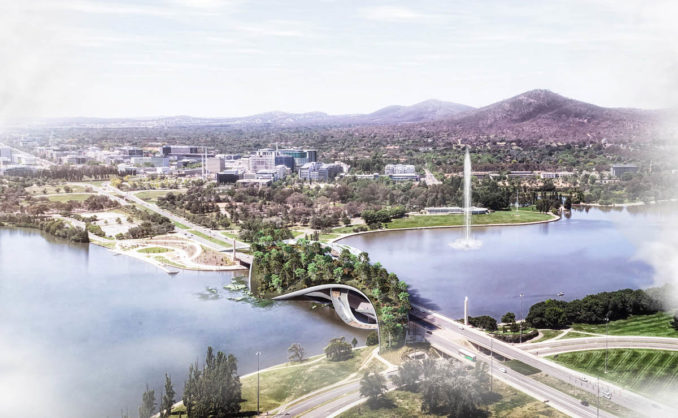
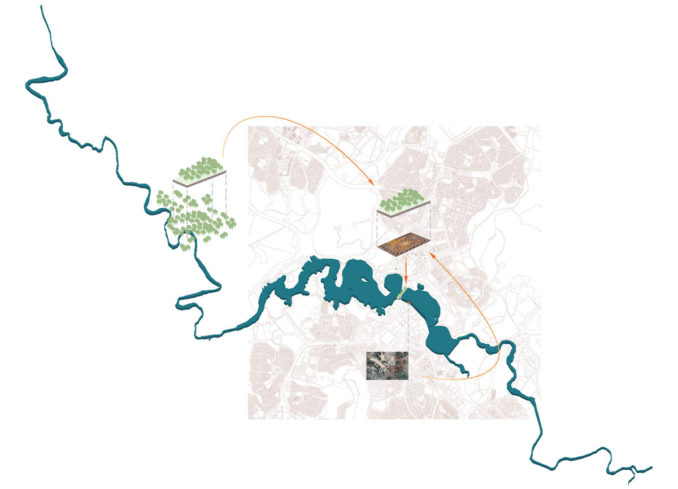
The design objective is to create a natural link over the existing Commonwealth Avenue in Canberra Australia. Two ribbons are proposed, one is a wildlife corridor and the other one is a linear park. Together it forms a divided but safe passage for wildlife and people, twinning around the existing road bridge and the tram tracks.
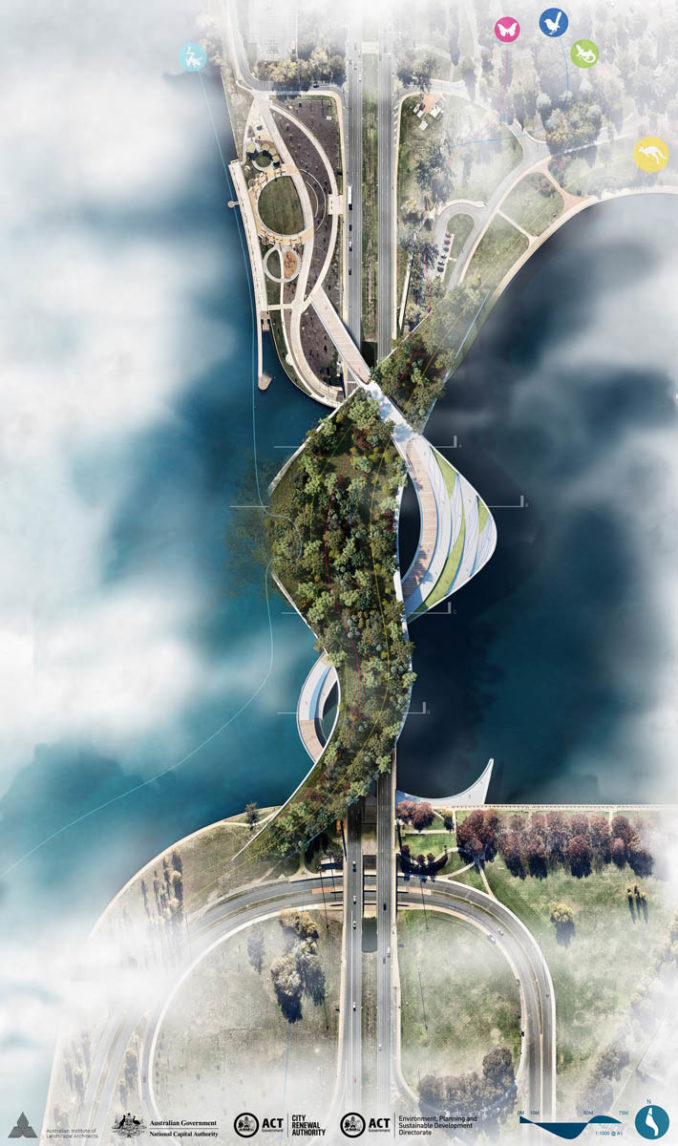
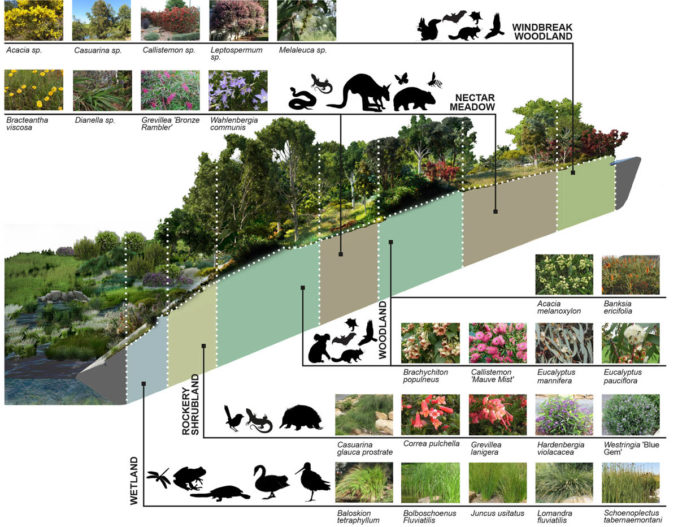
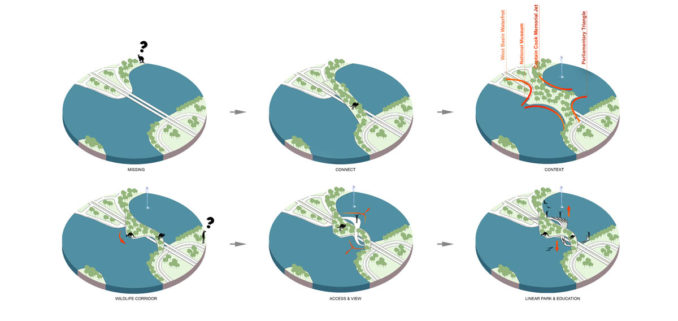
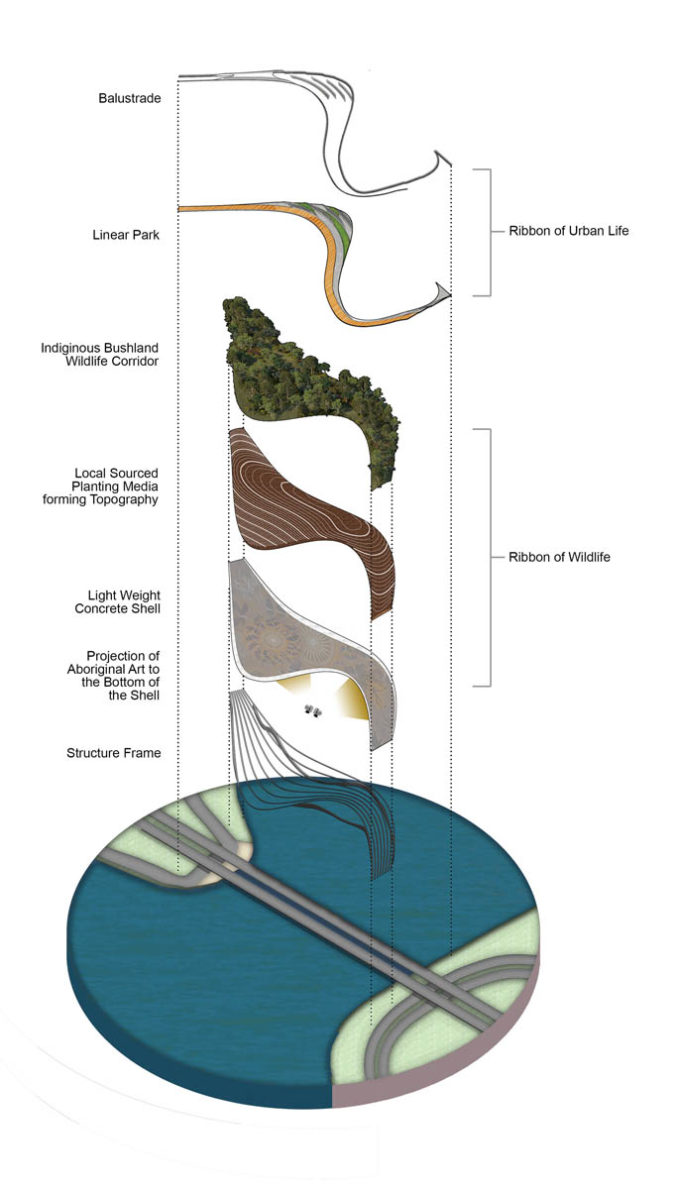
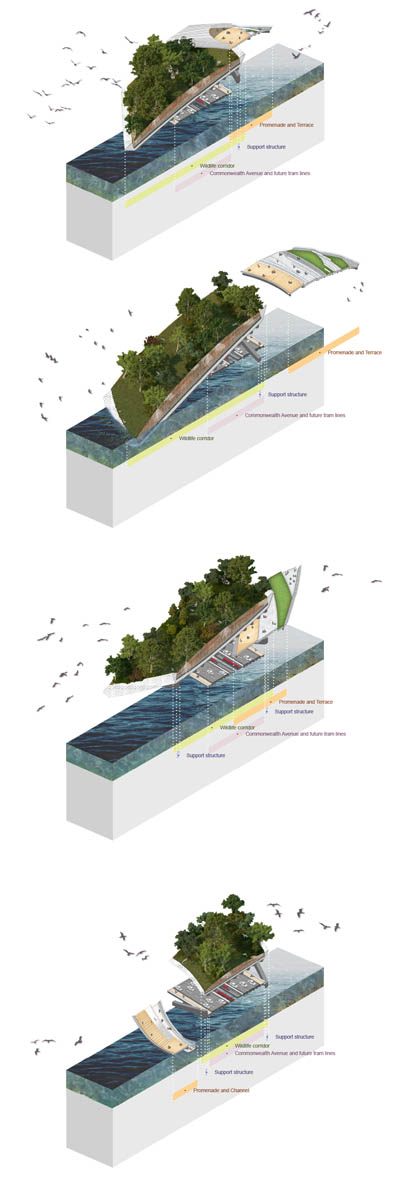
The ribbon of wildlife consists of wetland, rockery bushland, woodland and open meadow that provide food, shelter, water access for different species to nest and migrant. It creates a sanctuary over the waterway to connect habitats along the banks of Lake Burley Griffin. The forest will leverage transport and greenhouse gas emission aiming for Zero Emission Target 2045 sets by Australian Capital Territory Climate Change Strategy. The curve form and scaly texture of the body are inspired by the Rainbow Serpent from the Dreamtime, which represents the source of life and prosperity of nature in Australian Aboriginal culture. Along with other artwork across the site, it creates a new icon that celebrates the Ngunawal traditions and tells the stories about the legacy.
The ribbon of urban life is a linear park with components of boardwalk promenade, terrace plaza, observation platform and water channel. The park meanders and undulates across the water providing fun motion experience with ramps, stairs and slide. People come here for ceremonies, events, art and social life, who will also experience changing views to adjacent landmarks, tranquil water and the nature reserves in beyond. An observe channel under the water provides an opportunity to see wildlife in the lake, which can be used for study and research on aqua life. Light projection under the wildlife structure will become another attraction for entertainment and education. Solar panels are integrated into paving to generate clean power for illumination, operation, and possible future transport.
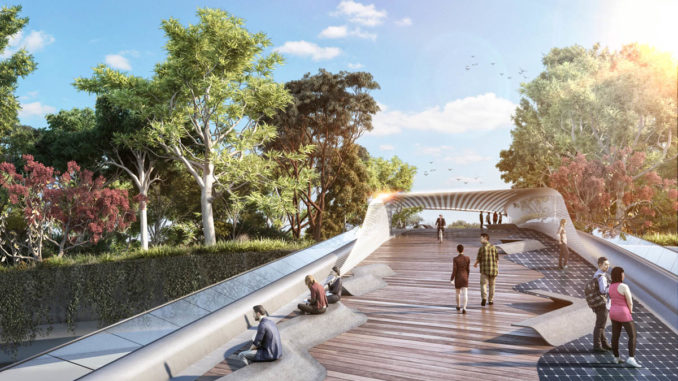
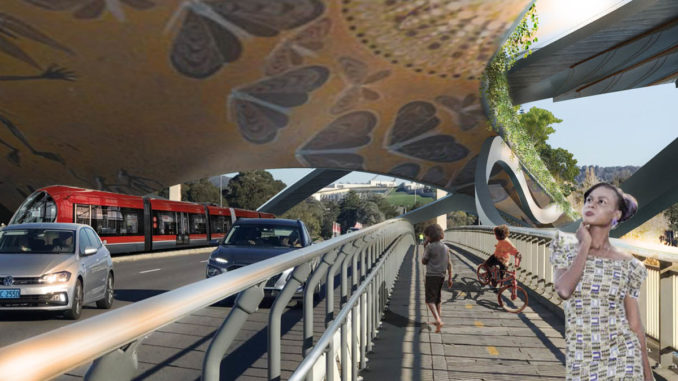
This futuristic creation of urban forest and park are inseparable just like people and wildlife in the ecosystem. This experiment on a new design style of green infrastructure aims to rebuild the lost habitat connection over water and contribute to a healthy urban environment. This symbolic landmark will preserve history and heritage and deliver a message to future generations before their actions on change. As city makers, we have the responsibility to slow down the climate change urgently before the extinction of more species, to protect the resources we possess and use wisely.
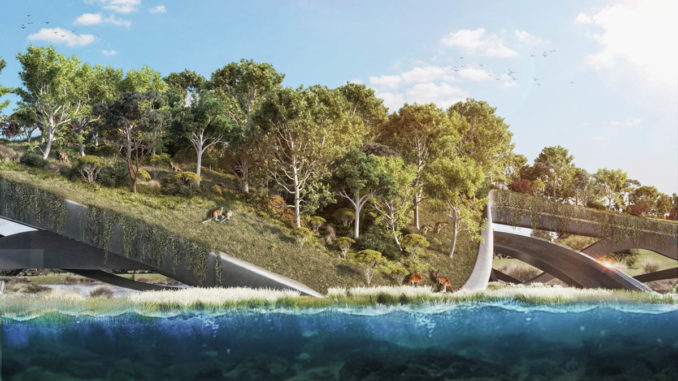
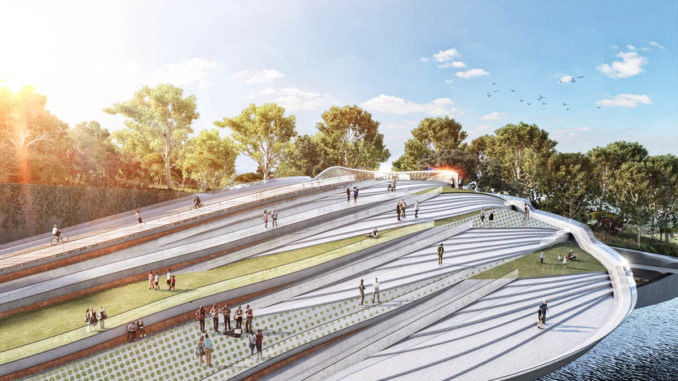
The proposed Ribbons of Life is to create a forest shell over the existing road bridge between the Parliament House and the CBD.
Imitating a piece of bushland from the upper stream of river. The inundated aboriginal rock art will be revived by projection under the shell structure.
The forest ribbon connects the parks on both sides of the lake, width varies from 30 to 100 metres, a safe passage for indigenous wildlife.
The organic form has integrated the views to the surrounding landmarks. The west fringe extends into the water providing the water access for the passengers.
Key components of the linear park:
1. Bird observing corridor above the wildlife corridor;
2. Plaza facing existing water jet;
3. Laser projection art under the forest shell;
4. Water life observing channel.
The forest will cover the concrete shell in an organic form, echoing the green architecture of the Parliament House.
‘Ribbons of Life’
Design Team Lead by CX Landscape:
George Zhuo, Registered Landscape Architect, CX Landscape Founder and Design Director in Melbourne
Jing Peng, Registered Landscape Architect, CX Landscape Design Director in Brisbane
Simon (Yidong) Zhao, Architect/3D Visualiser
Danniel Dong, Architect
Annie Huang, Landscape Architect
